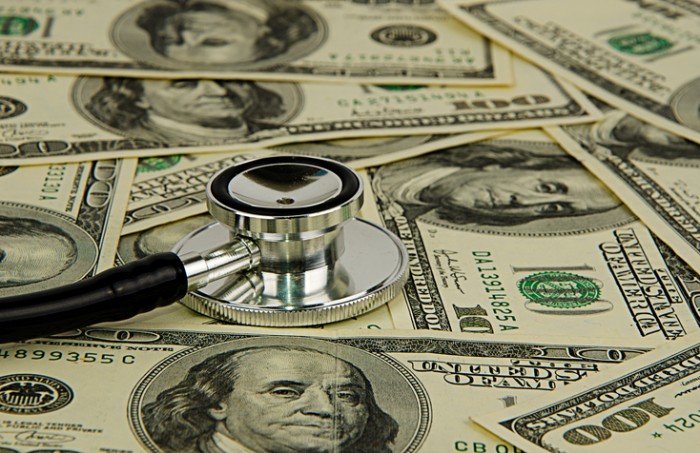CMS: Healthcare Spending to Rise by 5.5% Annually to $6T in 2027
Healthcare spending is expected to continue to increase in the next decade, with growth driven primarily by key economic and demographic factors.

Source: Thinkstock
- National healthcare expenditures are expected to grow at an average of 5.5 percent annually from 2018 to 2027, reaching $6.0 trillion by 2027, according to a report from the Office of the Actuary at CMS.
The report also projects that national healthcare spending will grow more rapidly than gross domestic product (GDP) spending by 0.8 percentage points from 2018 to 2027. As a result, the healthcare-related share of GDP is expected to rise from 17.9 percent in 2017 to 19.4 percent by 2027.
The Office of the Actuary predicts that national growth in health spending and enrollment will be driven primarily by critical economic factors, including an increase in income and employment. Demographic features are also expected to affect spending growth, with the Baby Boomer generation continuing to age into Medicare.
Increasing costs of medical goods and services will contribute to growth in healthcare spending. Between 2018 and 2027, the costs of healthcare goods and services are projected to grow 2.5 percent, compared to 1.1 percent during the period of 2014 to 2017.
Similar to projections in last year’s report, the Office of the Actuary expects that government entities will finance close to half of all national health spending in the next decade.
“The report found that by 2027, federal, state and local governments are projected to finance 47 percent of national health spending, an increase of 2 percentage points from 45 percent in 2017,” CMS says.
CMS also projects that average annual spending growth in Medicare will surpass that of Medicaid and private insurance.
“Medicare spending growth is projected to average 7.4 percent over 2018-2027, the fastest rate among the major payers,” CMS says.
“Underlying the strong average annual Medicare spending growth are projected sustained strong enrollment growth as the baby-boomers continue to age into the program and growth in the use and intensity of covered services that is consistent with the rates observed during Medicare’s long-term history.”
Medicaid is projected to grow at an average annual rate of 5.5 percent from 2018 to 2027, mainly because of program expansions and increased enrollment.
“Medicaid expansions during 2019 in Idaho, Maine, Nebraska, Utah, and Virginia are expected to result in the first acceleration in growth in spending for the program since 2014 (from 2.2 percent in 2018 to 4.8 percent in 2019),” the report states.
“Medicaid spending growth is then projected to average 6.0 percent for 2020 through 2027 as the program’s spending patterns reflect an enrollment mix more heavily influenced by comparatively more expensive aged and disabled enrollees.”
Private insurance is expected to grow at the slowest rate of all the major payers, at an average of 4.8 percent. This slow growth is partly because of baby-boomers aging into Medicare from private coverage, CMS notes.
Out-of-pocket costs are also expected to see a slow average annual growth. Over 2018 to 2027, out-of-pocket spending is projected to increase at 4.8 percent and represent 9.8 percent of all healthcare expenditures by 2027, down from 10.5 percent in 2017.
Prescription drug spending, on the other hand, is expected to increase by an average of 5.6 percent over the next few years.
“Underlying faster growth in the utilization of prescription drugs, particularly over 2020-2027, are a number of factors. These factors include efforts on the part of employers and insurers to encourage better medication adherence among those with chronic conditions, as well as changing pharmacotherapy guidelines,” CMS says.
“Faster projected private health insurance spending growth in lagged response to higher income growth and an expected influx of new and expensive innovative drugs into the market towards the latter stage of the period will also contribute to prescription drug spending.”
Growth in hospital spending is expected to increase by an average of 5.6 percent between 2018 and 2027, primarily because of the projected growth of both Medicare and Medicaid.
Finally, physician and clinical services are also predicted to grow in the coming years, by an average of 5.4 percent. This increased spending will mostly be due to delivering care and medical services to the aging population.
